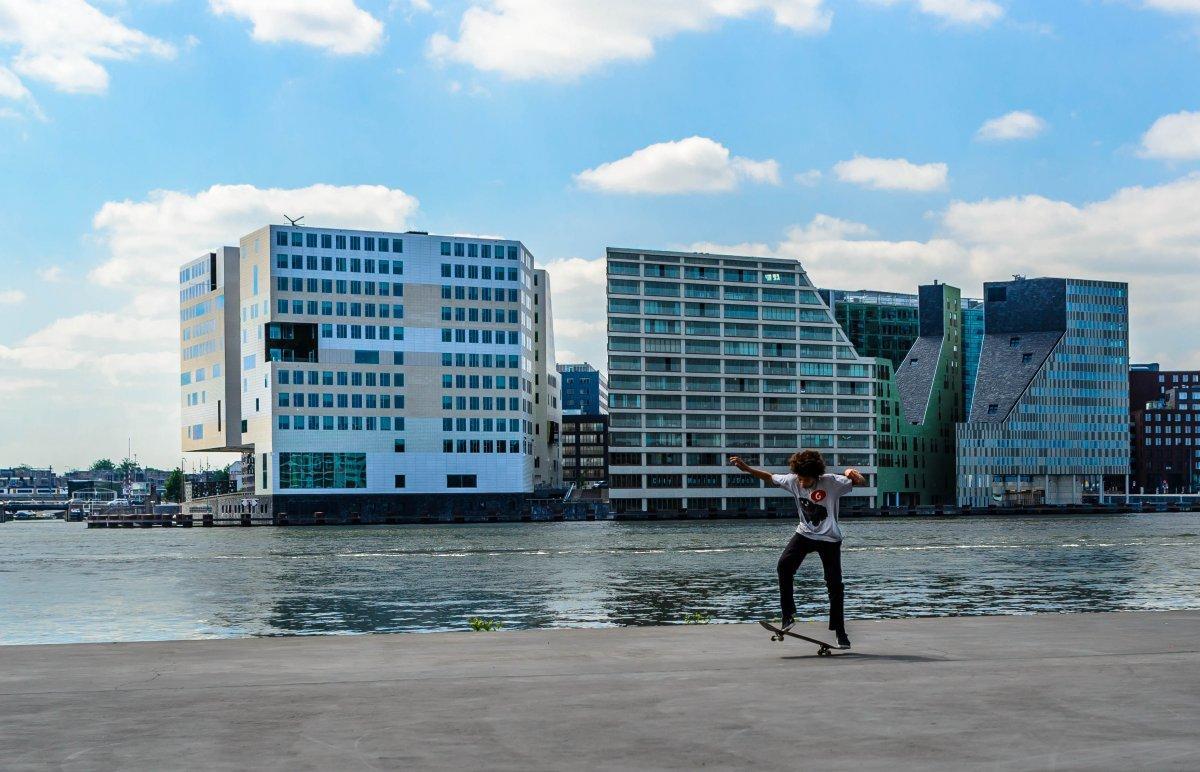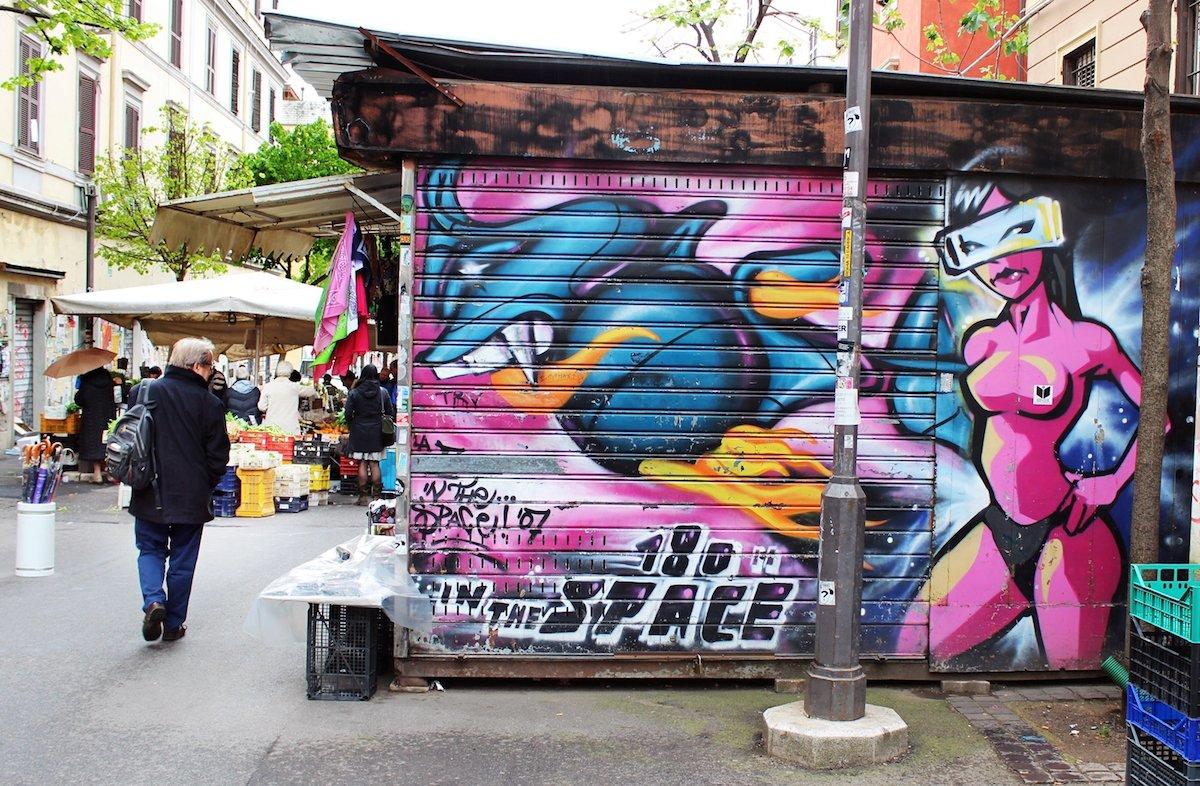The Independent's journalism is supported by our readers. When you purchase through links on our site, we may earn commission.
The 23 coolest neighbourhoods in Europe, according to travel bloggers

Your support helps us to tell the story
From reproductive rights to climate change to Big Tech, The Independent is on the ground when the story is developing. Whether it's investigating the financials of Elon Musk's pro-Trump PAC or producing our latest documentary, 'The A Word', which shines a light on the American women fighting for reproductive rights, we know how important it is to parse out the facts from the messaging.
At such a critical moment in US history, we need reporters on the ground. Your donation allows us to keep sending journalists to speak to both sides of the story.
The Independent is trusted by Americans across the entire political spectrum. And unlike many other quality news outlets, we choose not to lock Americans out of our reporting and analysis with paywalls. We believe quality journalism should be available to everyone, paid for by those who can afford it.
Your support makes all the difference.While most tourists choose their holidays based on affordability or the famous landmarks they want to post to Instagram, many prefer to head off the beaten path and discover where locals love to hang out.
Travel website Travel Supermarket partnered with bloggers Adam Goffman, who runs "Travels of Adam," and Emily Ray from "The Cosy Traveller" to find out which neighbourhoods across Europe will become tourist hotspots in 2017.
The ranking was broken down into three categories — culture, creativity, and value — and looked at the ratio of trend-setting and creative industry indicators (such as independent coffee shops, vintage fashion stores, independent bike shops, co-working spaces and art galleries/studios) to the number of residents. Penalty points were subtracted for areas that had high numbers of big chain brands such as Starbucks, Costa and Pret a Manger.
The bloggers' hipster hangouts are spread all over the continent, from Manchester to Berlin, and include everything from former Soviet borders to self-proclaimed republics and anarchist squats.
Keep scrolling to see the most alternative neighbourhoods in Europe.
23. Poble Sec — Barcelona, Spain

Two Spanish cities make it into the bloggers' ranking, including Poble Sec — which is also home to the National Catalonian Museum of Art. When you're finished exploring the local landmarks, Poble Sec is a great place to spend the day, and scored well on traveller value in the ranking.
22. Cotroceni — Bucharest, Romania
Cotroceni is a peaceful district just west of Bucharest's city centre which is best known for its green spaces and student population. The area is not just a haven for independent businesses and quirky bars. It is also one of the country's most important neighbourhoods, and is where the President of Romania's official residence and National Museum are located. The bloggers gave Cotroceni a score of 9/10 for its cultural hotspots.
21. Malasaña — Madrid, Spain
Malasaña scored well in the ranking's culture category. It is also home to Madrid's Comillas Pontifical University. The area is famous for its links to Spanish rebellion, and is considered by locals to be the birthplace of La Movida Madrileña — a counter-culture movement that evolved after the death of General Francisco Franco in 1975.
Today, it is one of the most popular nightlife areas in the city, while the Madrid Street Art Project offers guided tours of the neighbourhood's historic graffiti.
20. Belleville and Ménilmontant — Paris, France
Belleville and Ménilmontant are located in Paris' north-eastern quarters. The area's cafés and bars are affordable, scoring 8/10 for value in the bloggers' ranking, but the area's most interesting landmarks are free to visit. The nearby Père Lachaise cemetery, for example, is the burial place of famous singers, writers, and artists, including Oscar Wilde and Edith Piaf.
19. Savamala — Belgrade, Serbia

Over the last seven years, Savamala, behind Belgrade's Central Station, has been transformed from one of the city's most polluted and socially disadvantaged districts into a creative hub, thanks to the launch of KC Grad — an independent arts centre founded by local artist Ljudmila Stratimirovic. The neighbourhood is filled with creative venues like design centre Mikser House and gallery G12Hub.
18. Amsterdam-Noord — Amsterdam, Netherlands
Amsterdam-Noord is situated north of the IJ lake, which separated it from the rest of the city. Here, boutique hotels are housed in refurbished warehouses and former youth prisons, and the area is also home to Amsterdam's oldest-running cinema — The Movies — which has entertained locals for more than 100 years.
17. 7th District — Budapest, Hungary

Budapest's 7th district — which was once home to the city's Jewish community — is famous for its ruin pubs. The bars are based in abandoned houses, cellars, and factory buildings, and are furnished with reclaimed and recycled objects, from chairs and tables to old cars. As well as offering cheap drinks, they can be a window into Budapest's history over the last century.
=15. Holesovice — Prague, Czech Republic
Holesovice performed well across all three categories, scoring 8/10 for culture and creativity, and 6/10 for value. Historically, it was the city's meatpacking district, but today, it is filled with modern bars and restaurants serving contemporary European cuisine.
=15. Mariahilf — Vienna, Austria
Mariahilf in Vienna makes it into the top 15 for its cultural and creative offerings. It is home to historic landmarks like the Theater An Der Wein — the national opera house where Ludwig van Beethoven once lived.
=13. Plagwitz — Leipzig, Germany
Two German neighbourhoods make it into the list, including Plagwitz to the south-west of central Leipzig. Plagwitz was actually a town in its own right until 1891, when it was incorporated into Leipzig. The district has a strong Portugese and Brazilian presence, and is known as a residential hub for the city's professional artists.
One of Plagwitz's biggest cultural attractions is the Spinnerei — a disused cotton factory that now houses art galleries, exhibitions, and film screenings.
=13. Uzupis — Vilnius, Lithuania

Uzupis is largely located in Vilnius' old town, a UNESCO World Heritage site, meaning the neighbourhood is brimming with interesting architecture and history. It is a self-proclaimed republic, and celebrates its annual Independence Day on April 1. It has its own president, a small army, four flags, and even its own constitution.
12. Nørrebro — Copenhagen, Denmark
Copenhagen is one of Europe's most innovative cities when it comes to cycling, and there's nowhere better to ride a bike than Nørrebro. The award-winning Superkilen (pictured) — a public park in the heart of the neighbourhood — is filled with plants and artefacts from 60 countries around the world and contains its own cycle track. Unsurprisingly, Nørrebro scored 9/10 for creativity in the bloggers' ranking.
11. Kalamaja — Tallinn, Estonia
Estonia may not be the first place that springs to mind when looking for a holiday in 2017, but it is filled with cultural landmarks, scoring 10/10 in the ranking's culture category. The once closed-off Soviet border zone is now home to some of Tallinn's most popular independent galleries, bars, and cafes.
=9. Exarchia — Athens, Greece

Exarchia is famous as a home to Greek anarchists, and also has a large student population thanks to its proximity to the National Technical University of Athens. The bright, heavily-graffitied area hosts unique community projects, such as an abandoned parking lot which locals have turned into an allotment.
=9. Sredets — Sofia, Bulgaria
Sredets performed well on traveller value, scoring 7/10 in the ranking and putting it into the travel bloggers' top 10 neighbourhoods. There's no shortage of things to see, as Sredets hosts Bulgaria's National Art Gallery, Natural History Museum, and National Theatre, as well as being home to Sofia University.
8. Grünerløkka — Oslo, Norway
Three Scandinavian districts make it into the top 10, including Grünerløkka in Oslo. Traditionally the working-class area of Norway's capital, today the area hosts a number of galleries, vintage stores, bars, and a flea market every Sunday.
7. Pigneto — Rome, Italy

Rome may be home to some of the world's most popular tourist attractions, but Pigneto is a world away from the city centre. The neighbourhood performed well across all categories, scoring 9/10 for culture and creativity, and 8/10 for value.
=5. Metelkova — Ljubljana, Slovenia
Located on the site of former military barracks, Metelkova is an autonomous social centre in the heart of Ljubljana, and is one of the largest urban squats in Europe. Founded in 1993, the area hosts around 1,500 cultural events each year.
=5. Södermalm — Stockholm, Sweden
Södermalm is based on an island in the centre of Stockholm, and is one of the best places to see the city's skyline.
4. Praga — Warsaw, Poland

Praga used to be one of the most dangerous parts of Warsaw, and even gained the nickname "The Bermuda Triangle" with locals. Today, though, it is a meeting place for the city's artists and overflowing with artistic studios and galleries, alternative theatres, and underground clubs.
3. Ancoats — Manchester, UK
Goffman and Ray claim that Ancoats in Manchester is Britain's newest must-see neighbourhood. Ancoats became one of the UK's most important industrial districts in the 18th century, but is now a hotspot for independent businesses.
2. Miera Iela — Riga, Latvia

Miera Iela is another neighbourhood which proudly proclaims independence from its host city. The Republic of Miera Iela is an official body which runs an annual festival in the area, and can even apply for government funding.
1. Kreuzberg — Berlin, Germany
Kreuzberg is Europe's coolest neighbourhood, according to the bloggers. It scored 10/10 in the ranking's cultural category, and it's not hard to see why. The area is home to Checkpoint Charlie — a crossing point of the Berlin Wall and one of the most important landmarks in Soviet history.
The area and its bohemian residents have been made famous in the music industry, and bands from Bloc Party to Get Cape, Wear Cape, Fly have referenced the district in their music.
Read more:
• 10 under-the-radar destinations to visit, according to the youngest person to travel to every country in the world
• 11 books Barack Obama thinks everyone should read
• Meet the 28-year-old London banker who is the youngest person to travel to all 196 countries
Read the original article on Business Insider UK. © 2016. Follow Business Insider UK on Twitter.
Check out the latest tours, holidays and cruises from Independent Holidays
Join our commenting forum
Join thought-provoking conversations, follow other Independent readers and see their replies
Comments